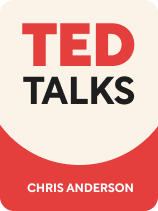

This article is an excerpt from the Shortform book guide to "TED Talks" by Chris Anderson. Shortform has the world's best summaries and analyses of books you should be reading.
Like this article? Sign up for a free trial here .
What’s a demonstrative speech? What are some examples of demonstrative public speaking?
As the name suggests, a demonstrative speech aims to provide a demonstration rather than to explain or persuade. It could be a demonstration of your work, a demo workshop on how to do something, or how something works.
Chris Anderson, the author of TED Talks, offers one strategy for inventors and another for artists.
Strategy for Inventors: “The Demo”
If your presentation is about a new invention or process, images and words won’t be enough—a demonstration is ideal. Demonstrative public speaking gigs are exciting because they give the audience a glimpse of the future. Anderson advises against beginning your presentation with detailed context and terminology. Instead, he says to tease and intrigue the audience: Give them only as much information as they need while you reveal more and more, building to a climax where you demonstrate the full technology. End your talk with how this new technology or invention will impact the world, and leave the audience feeling inspired and hopeful about the future.
(Shortform note: Steve Jobs was known for presenting Apple’s new products using live demos, and his demonstration of GarageBand is considered by some to be a masterpiece. Jobs employed several techniques to keep his audience engaged, beginning with the declaration that this invention is not just for pro musicians, but for everyone. If your product, invention, or process appears on the surface to be niche, make the wider value known from the beginning.)
Strategy for Artists: “The Tour”
Most often used by artists, designers, architects, and photographers, “the tour” is a talk that walks the audience through a series of images. Displayed one after another, each image inspires a bit more wonder than the last. Anderson explains that in this speech, the purpose is to inform or inspire, and it’s meant to be an enjoyable experience. The subject can be serious, funny, or even provocative.
This type of talk has a simple structure (going from one image to the next), but to be effective, each image needs to build on the one before it, or they need to have a throughline that links them all together. He adds that if you’re showing something you created, show your process (including mistakes) to add interest. Although you can explain each image as it comes, you should also feel free to embrace silence as the audience takes in each image.
(Shortform note: Chicago artist and curator Sergio Gomez says that the best art talks follow a storyline—similar to how Anderson says a series of images should have a connecting throughline or build off one another. Gomez uses a formula when presenting his artwork: He begins with the story, then discusses his process, influences, and concerns. Next, he shows a series of works from the collection, and he finishes with a few final thoughts.)

———End of Preview———
Like what you just read? Read the rest of the world's best book summary and analysis of Chris Anderson's "TED Talks" at Shortform .
Here's what you'll find in our full TED Talks summary :
- A nuts-and-bolts guide to public speaking that takes you from the initial idea to your final bow
- TED curator Chris Anderson's public speaking advice on everything from scripting to wardrobe
- A comparison of Anderson's advice to that of other public speaking experts






